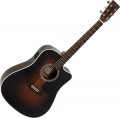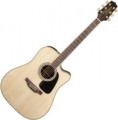The number of frets provided on the neck of the guitar.
The fret is the gap between the two nut on the fretboard. By pressing a finger on the string in this gap, the guitarist changes the pitch of the string: the farther the fret (from the headstock) — the shorter the string is and the higher the sound.
The
more frets, the more notes the guitarist can take on each string and the more possibilities the instrument gives. On the other hand, for numerous frets, a fretboard of the appropriate length is needed, which affects the dimensions and cost of the instrument, and sometimes it is simply not justified: for example, ordinary guitars have at least
18 or
20 frets, while among ukuleles (see "Type ”), there are models for
12 – 16 frets.
In general, it makes sense to specifically look for an instrument with numerous frets if you plan to play complex solo parts on it; for playing chords, as well as relatively simple performance by notes, the number of frets does not play a special role.
Scale length of the guitar. The scale in this case is the working part of the string, in other words, the distance from the saddle (on the headstock) to the saddle (on the bridge). In most acoustic and similar guitars, the scale is set during production and is unchanged. Without going into technical details, we can say that the value of this parameter is generally a reference: it allows you to some extent estimate the overall dimensions of the instrument, as well as the size of the frets (the longer the scale, the larger the size of the frets, regardless of their number). However, there is also a practical application: with an adjustable anchor (see above), the scale length data can be useful in the tuning process.

